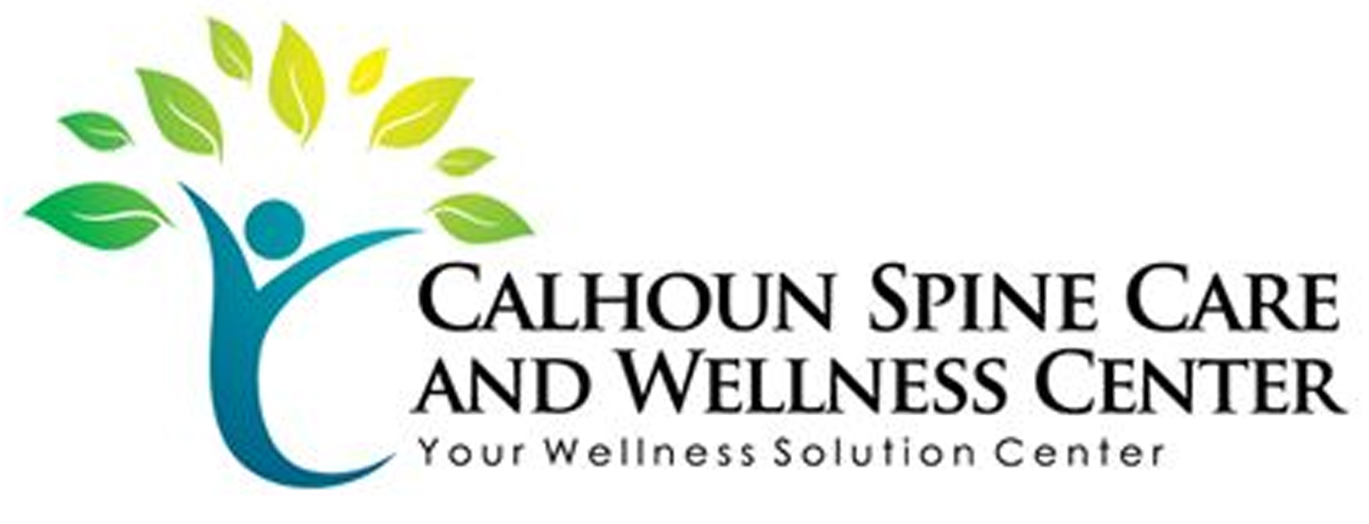If you're looking to enhance your flexibility, it's important to explore effective care solutions that fit your lifestyle. You might find that incorporating daily stretching routines and regular yoga or Pilates sessions is just the beginning. Strength training can play a vital role in supporting your joints, while techniques like foam rolling and massage therapy can ease muscle tension. But what specific strategies can you implement to see real progress? Understanding these components can make a significant difference in your journey toward better flexibility.
Understanding Flexibility
Flexibility isn't just about touching your toes; it's an essential component of overall fitness and mobility. Understanding flexibility means recognizing how your muscles, tendons, and ligaments work together to allow movement. When you think about flexibility, you might picture gymnasts or dancers, but it plays a crucial role in your everyday life, too.
Flexibility refers to the range of motion in your joints and how easily your muscles stretch. It's influenced by factors like age, genetics, and activity level. If you're active, you may already have a decent level of flexibility, but that doesn't mean you shouldn't work on it. Improving your flexibility can enhance your performance in various activities, reduce the risk of injury, and help alleviate muscle tension.
You can incorporate various stretching techniques into your routine to increase flexibility. Static stretching, where you hold a stretch for a set period, is great for lengthening muscles after a workout. Dynamic stretching, which involves moving parts of your body through their full range of motion, is beneficial for warming up before physical activity.
Additionally, yoga and Pilates can be excellent ways to boost your flexibility while also promoting balance and strength.
When you commit to regular flexibility training, you'll likely notice improvements not just in your athletic performance but also in everyday movements, making tasks easier and more comfortable.
Importance of Mobility
Mobility plays a key role in how well you move and function throughout your day. It's not just about being able to walk or run; it's about how well your joints, muscles, and nervous system work together to allow you to engage in everyday activities. When your mobility is compromised, even simple tasks like bending down to tie your shoes or reaching for an item on a shelf can become a struggle.
Good mobility enhances your overall quality of life. It allows you to maintain independence as you age, enabling you to participate in social activities, exercise, and hobbies that bring joy and fulfillment. Without adequate mobility, you might find yourself avoiding certain activities out of fear of injury or discomfort, leading to a sedentary lifestyle that can impact your physical and mental health.
Moreover, mobility plays a vital role in injury prevention. When your body moves freely and efficiently, you're less likely to strain muscles or suffer from joint pain. Regular movement keeps your muscles strong and your joints flexible, which is essential for maintaining balance and coordination. This is especially important as you age, as falls can lead to serious injuries.
Incorporating mobility work into your daily routine, whether through stretching, strength training, or simple movements, can make a significant difference.
Effective Stretching Techniques
Incorporating effective stretching techniques into your routine can greatly enhance your flexibility and overall movement quality. To get started, focus on two main types of stretching: dynamic and static.
Dynamic stretching is ideal for warming up. It involves controlled movements that gently take you through your range of motion, preparing your muscles for activity. Try leg swings, arm circles, or torso twists to get your blood flowing and muscles ready.
Once you've warmed up, it's time to shift into static stretching. This technique involves holding a stretch for a period, usually between 15 to 60 seconds. Focus on major muscle groups like hamstrings, quadriceps, and shoulders.
When you stretch, make sure to breathe deeply and avoid bouncing, as this can lead to injury. Instead, ease into each stretch, feeling the tension release.
Incorporate stretching into your post-workout routine as well, when your muscles are warm and more pliable. This can help improve flexibility over time and reduce soreness. Don't rush; give yourself enough time to feel the benefits.
Consistency is key. Aim to stretch at least three times a week to see significant improvements. Listen to your body, and don't push yourself too hard; stretching should feel good, not painful.
Role of Strength Training
Building strength is an essential component of improving flexibility and overall physical performance. When you engage in strength training, you're not just building muscle; you're also creating a solid foundation that enhances your body's ability to stretch and move freely. Strong muscles support your joints, allowing for greater range of motion and reducing the risk of injury during various physical activities.
Incorporating strength training into your routine can lead to improved muscle balance. When certain muscle groups are stronger, they can better support opposing muscles, which helps maintain proper alignment. This balance is vital for achieving ideal flexibility. For instance, strengthening your hamstrings can support your glutes, allowing for a more effective stretch in your hip flexors.
Moreover, engaging in strength training increases your muscle endurance. When your muscles are more resilient, they can handle longer periods of stretching without fatiguing. This endurance allows you to hold stretches for extended times, leading to greater flexibility gains over time.
It's important to focus on functional movements that mimic everyday activities. Exercises like squats, lunges, and deadlifts not only build strength but also enhance flexibility in the muscles and joints involved.
As you progress, you'll notice that your ability to perform stretches improves considerably, contributing to better overall physical performance.
Incorporating Yoga Practices
Incorporating yoga into your routine can greatly enhance your flexibility and overall well-being.
You'll discover various poses that not only stretch your muscles but also promote relaxation and mindfulness.
Let's explore some essential yoga practices and their benefits to help you get started.
Benefits of Yoga
Yoga offers a multitude of benefits that go beyond just improving flexibility. When you practice yoga regularly, you'll notice not only your body becoming more limber but also your mind and spirit experiencing a positive shift.
Here are some key advantages you can expect:
- Stress Relief: Yoga promotes relaxation through deep breathing and meditation techniques, helping you manage stress more effectively.
- Enhanced Strength: Many yoga poses engage multiple muscle groups, building strength and stability throughout your body.
- Improved Posture: Consistent practice encourages awareness of body alignment, which can lead to better posture and reduced discomfort.
- Mental Clarity: The focus required during yoga can sharpen your concentration and improve your overall mental clarity.
Essential Poses to Try
To enhance your flexibility and overall well-being, incorporating essential yoga poses into your routine is key.
Start with Downward-Facing Dog. This pose stretches your hamstrings, calves, and spine while strengthening your arms and legs. Hold for 30 seconds, feeling the release in your back.
Next, try the Butterfly Pose. Sit with the soles of your feet together and gently press your knees toward the ground. This will open your hips and improve flexibility in your groin area. Hold for a minute, breathing deeply to deepen the stretch.
The Cat-Cow stretch is another must-try. Shift between arching your back (Cow) and rounding it (Cat) while on all fours. This movement increases spinal flexibility and promotes blood flow. Repeat for a minute.
Lastly, incorporate Pigeon Pose for hip flexibility. From Downward Dog, bring one knee forward and extend the opposite leg back. Lean forward to deepen the stretch. Hold for 30 seconds on each side.
Benefits of Foam Rolling
Foam rolling often serves as a game-changer for enhancing flexibility and overall muscle recovery. By incorporating foam rolling into your routine, you can access a wide array of benefits that go beyond just muscle relaxation.
This simple yet effective technique helps you feel better and perform better, whether you're an athlete or just someone looking to move more freely in daily life.
Here are some key benefits of foam rolling:
- Increased Blood Flow: Foam rolling stimulates circulation, delivering more oxygen and nutrients to your muscles. This helps speed up recovery and reduces soreness.
- Improved Flexibility: Regular foam rolling can help break down muscle knots and adhesions, allowing your muscles to stretch more effectively and improving your overall range of motion.
- Enhanced Muscle Performance: By releasing tension in your muscles, you can engage them more efficiently during workouts, leading to better performance and reduced risk of injury.
- Stress Relief: Foam rolling isn't just physical; it can also be a great way to unwind. The pressure you apply can stimulate the release of endorphins, leaving you feeling relaxed and rejuvenated.
Incorporating foam rolling into your routine just a few times a week can make a noticeable difference in your flexibility and muscle recovery.
Utilizing Massage Therapy
Massage therapy is a powerful tool for enhancing flexibility and relaxation. When you receive a massage, your muscles and soft tissues are manipulated, which helps to release tension and improve circulation. This process not only eases tightness but also increases the overall range of motion in your joints. By incorporating regular massage sessions into your routine, you can considerably boost your flexibility.
You might be wondering how to get started with massage therapy. First, identify your specific needs. Are you experiencing tightness in certain areas, or do you simply want to promote overall muscle health? Once you know what you're looking for, seek out a qualified massage therapist who specializes in techniques that align with your goals, such as deep tissue, sports, or myofascial release.
During your sessions, communicate openly with your therapist. Let them know your flexibility goals and any discomfort you may feel. This will help them tailor the massage to your requirements.
You can also incorporate self-massage techniques using tools like foam rollers or massage balls to complement your professional sessions.
To maximize the benefits of massage therapy, consider timing your sessions strategically—before or after workouts can be especially effective. Keeping a consistent schedule will help maintain muscle elasticity and improve your overall flexibility.
Recovery Strategies
While you push your body to achieve greater flexibility, effective recovery strategies become vital to prevent injury and enhance your progress. Neglecting recovery can lead to tight muscles, increased soreness, and setbacks in your flexibility journey.
By incorporating the right strategies, you'll optimize your recovery and keep your body ready for your next session.
Here are four effective recovery strategies you should consider:
- Hydration: Staying hydrated helps flush out toxins and supports muscle recovery. Drink plenty of water before, during, and after your workouts.
- Active Recovery: Engaging in low-intensity activities like walking or gentle yoga can promote blood flow and speed up recovery while keeping your muscles engaged.
- Stretching: Post-workout stretching helps lengthen muscles and improve flexibility. Focus on static stretches that target the areas you've worked on, holding each stretch for at least 30 seconds.
- Rest: Never underestimate the power of a good night's sleep. Adequate rest helps your body repair tissues and recover from the stresses of training, making it essential for your flexibility gains.
Incorporating these recovery strategies into your routine won't only support your journey toward greater flexibility but also keep you feeling your best.
Daily Habits for Flexibility
To enhance your flexibility, it's important to integrate daily habits that support your goals. Start by incorporating stretching into your routine. Whether it's in the morning or after workouts, dedicate at least 10 to 15 minutes to stretch major muscle groups.
Focus on dynamic stretches before activities and static stretches afterward to improve your range of motion.
Consider incorporating yoga or Pilates into your week. These practices not only promote flexibility but also enhance strength and balance. Aim for at least two sessions a week, and you'll notice significant improvements over time.
Listen to your body, and don't push beyond your limits to avoid injury.
Stay hydrated; it's vital for muscle function and flexibility. Drink enough water throughout the day, especially before and after exercise. Proper hydration helps maintain elasticity in your muscles and connective tissues.
Additionally, pay attention to your posture. Whether you're sitting at a desk or standing, maintaining proper alignment can prevent stiffness and promote better flexibility.
Take breaks during long periods of sitting to stretch and move around.
Finally, incorporate foam rolling into your routine. This self-myofascial release technique helps relieve muscle tension and can enhance flexibility when done regularly.
Spend a few minutes each day rolling out tight areas.
Conclusion
Incorporating these effective care solutions into your routine can considerably boost your flexibility. By committing to daily stretching, engaging in strength training, and practicing yoga or Pilates, you'll enhance your mobility and overall well-being. Don't forget the benefits of foam rolling and massage therapy to relieve tension and aid recovery. By making these habits part of your lifestyle, you'll not only improve your flexibility but also support your body's health and functionality in the long run.



